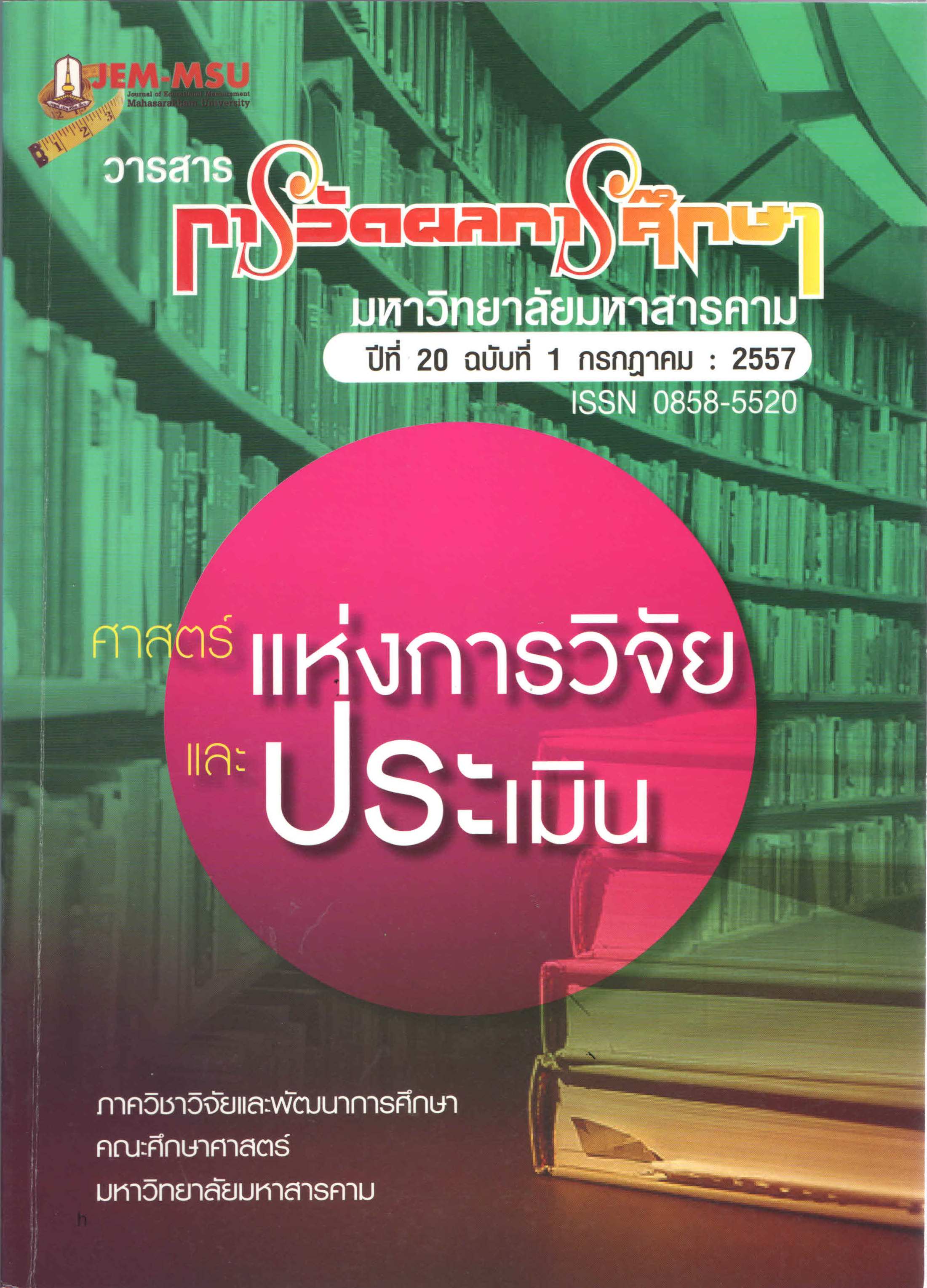The development of self-assessment for teaching professional practice teachers education standards
Main Article Content
Abstract
The purposes of the research were: 1) to develop the indicators indicating
teaching performance based on the standard of The Teachers Council of Thailand,
2) to create self-assessment form based on education standard of The Teachers
Council of Thailand, and 3) to measure the quality of the self-assessment form.
The sample groups consist of 1) the participants who develop the indicators using
Delphi Techniques. They are 17 experts who are skillful teachers with experiences
and 2) found by Stratified Random Sampling, the participants who measure the
instrument’s quality are 343 teachers belonging to The Secondary Educational
Service Area 32. The research tools consist of 1) questionnaire used for developing
the indicators and the statistics employed for the analysis are Median and
Interquartile Range and 2) self-assessment for teaching professional practice form
and the statistics employed for the analysis is Pearson’s Product Moment
Coefficient.
The research found as follows.
1) 60 indicators developed by Delphi Techniques and indicating
teaching career performance using the standard of the Teachers Council of
Thailand.
2) The self- assessment for teaching professional practice form was
divided into 2 parts: the first part was a general information checklist with 5 items
for the responder; the second part was a questionnaire with closed questions of
12 standards, 60 indicators.
3) To analyze the instrument’s quality, test-retest was conducted by
using Pearson’s Product Moment Coefficient. The result showed that Pearson’s
correlation was .83 with statistical significance of .01. This means that the form
retesting led to the reliability of self-assessment that was stable and reliable.
In conclusion, the present study provided the form of self-assessment for
teaching professional practice which is appropriate for teachers and educational
staffs. These people can employ the form to assess and develop themselves to
keep the quality and effectiveness of teaching.
Article Details
The content and information contained in the published article in the Journal of Educational Measurement Mahasarakham University represent the opinions and responsibilities of the authors directly. The editorial board of the journal is not necessarily in agreement with or responsible for any of the content.
The articles, data, content, images, etc. that have been published in the Journal of Educational Measurement Mahasarakham University are copyrighted by the journal. If any individual or organization wishes to reproduce or perform any actions involving the entirety or any part of the content, they must obtain written permission from the Journal of Educational Measurement Mahasarakham University.


